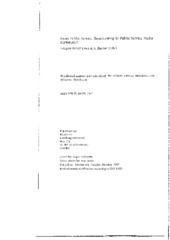Commercial Services, Enclosure and Legitimacy: Comparing Contexts and Strategies for Public Service Media Funding and Development
Chapter
Permanent lenke
https://hdl.handle.net/1956/2774Utgivelsesdato
2008Metadata
Vis full innførselSamlinger
Sammendrag
European public broadcasters have long since ceased to be solely publicly financed. But the inherently controversial licence fee on television sets has remained a key source of funding. Facing an increasingly complex digital media environment, public service providers have expanded beyond traditional broadcast radio and television to embrace digital technologies and correlated fields of activity. Because the legitimacy of public funding is closely connected to specific characteristics of broadcasting, this development encourages the search for alternative sources of income. The potential transformation from public service broadcasting to public service media thus compels a thorough discussion of institutional funding schemas. The chapter concentrates on elements of, and attitudes towards, commercial funding and arrangements that promote enclosure within and across media platforms. Relying on a comparative approach, I analyze how the strategies of public service broadcasters in three Western European nations correspond to their differing social and political contexts. The selected cases are Germanyʼs ARD and ZDF, the BBC in the UK and Norwayʼs NRK. The first part of the chapter concentrates on how shared challenges related to commercial funding and enclosure have been applied in different national settings from the preparations for the digital era until 2007. Mapping findings across contexts facilitates a discussion of the second main issue raised in this chapter: what do different strategies imply for the legitimacy of public broadcastersʼ funding schemas?
Beskrivelse
Chapter in anthology on Public service media.
